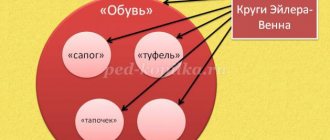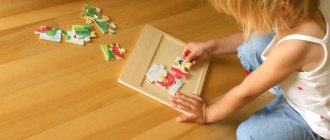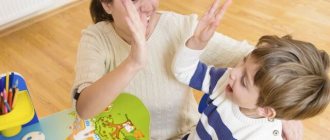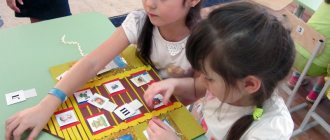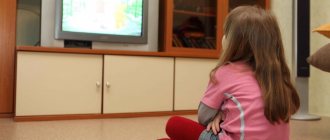Sand therapy for children makes a significant contribution to the development of cognitive and creative abilities, speech, fine motor skills and tactile sensitivity. Sand helps a child get rid of negative emotions, relax and relieve stress. Joint play and creativity with parents have a beneficial effect on family relationships.
Techniques for drawing on a light tablet
1. pouring
. The sand is clenched into a fist and passed through the fingers. The technique is suitable for drawing lines.
2. Pinch
. The child connects the thumb, middle and index fingers, picks up a little sand and scatters it. The method allows you to convey tones and shadows.
3. Palm
. With an open palm, the child levels the layer of sand, erases the drawing, and leaves prints.
4. Fist
. The child squeezes his palm and forms a spot on the sand layer with the back of his hand.
5. Finger painting
. This method allows you to create lines of different thicknesses and points, achieving image clarity. As a rule, children begin to work with their index finger. Encourage your child to use all fingers on both hands and make parallel movements. This stimulates brain activity.
6. Drawing with tools
. Drawings, lines, and ornaments are created using a comb. Pay your child's attention to how the pattern changes depending on the pressure applied.
MAGAZINE Preschooler.RF
Sand therapy as a means of adaptation for young childrenMunicipal preschool educational institution "Kindergarten of a combined type No. 131" of the Kirovsky district of Saratov
Teacher-psychologist of the highest qualification category Matveeva Tatyana Sergeevna, Saratov
What do you need to play in the sand? But, in essence, so little is needed: Love, desire, kindness, So that faith in Childhood does not disappear.
Let's paint the simplest drawer from a table with blue paint, A handful of golden sand will flow into it like a wondrous fairy tale.
A set of small toys Let's take it into the game... Like God We will create our own World of Wonders, Having walked the path of Knowledge.
When entering a preschool educational institution, all children experience adaptation stress.
The adaptive capabilities of a young child are limited, so a sudden transition of a child to a new social situation and a prolonged stay in a stressful state can lead to emotional disturbances or a slowdown in the rate of psychophysical development.
Thus, an important task for teachers is to help children overcome stress when entering a preschool institution and successfully adapt to it.
One of the effective means of adaptation is “Sand therapy” . Sand therapy is a type of play therapy.
The possibilities of sand therapy are multifaceted, but today I would like to dwell only on its advantages associated with the adaptation of young children to new living conditions.
Young children often cannot express their experiences due to the lack of active speech. Sand therapy may be useful for establishing mutual understanding with peers, adults and the new environment during the adaptation period. Sand therapy also stabilizes the child’s psycho-emotional state.
When working with children, it is recommended to use simple exercises that are based on such characteristics of young children as: emotionality, impressionability, the ability to quickly become infected, both positive and negative, by emotions from adults and peers and imitate their actions.
There is a large range of exercises and games with wet and dry sand. With hands immersed in the sand and on its surface. Having studied the literature on this problem, I came to the conclusion that, first of all, you need to use games on the surface of dry sand. Of particular interest to me are games such as:
- "Our Handprints"
- "The cubs are coming"
- “Bunny Jumping”, etc.
I also offer it to children
- slide your palms along the surface of the sand, performing zigzag and circular movements (like cars);
- walk along the surface of the sand with each finger alternately with your right and left hand (you can group your fingers in groups of two, three, four, etc.)
Each lesson using the sand therapy method has its own structural features:
1. Warm-up (or warm-up games). The stage of touching and playing on the surface of dry sand.
Goal: reduction of psychophysical stress, regulation of muscle tension, relaxation, development of tactile sensitivity, imagination, consolidation of knowledge about sensory standards.
At the stage of touching the surface of dry sand, I use games and exercises such as:
- Game "Hello Sand!"
- Game "Sand Rain"
- Exercise “Sand Wind”
- Game "Unusual Traces" .
2. Directly training part.
Goal: development of sensory abilities, object-practical manipulations, fine motor skills, cognitive and speech activity.
At this stage I am using games:
- Game "Sand Hide and Seek"
- Game “Hide the toys”
- Game "Children's secrets"
- Exercise “Funny fingers” , etc.
3. Final stage. The stage of touching and playing on the surface of wet sand.
Goal: acquiring new sensory experience, thanks to which children learn about their physical and sensory capabilities, as well as the properties of the things that surround them.
At this stage I use games:
- Game "A Stream Flows"
- Game "It's drizzling rain"
- Game "River and Stream"
- Game "Kulichiki"
- Game “Minks - mounds” , etc.
The sandbox is an attractive environment for implementing a fairytale therapy approach. For activities with children, tasks and games are selected in a fairy-tale form. For example: “Fences”. (Children make fences in a circle with their hands; behind such a fence you can hide a bunny from the evil gray wolf). At the same time, negative assessment of the child’s actions and results is completely eliminated and imagination and creativity are encouraged to the maximum.
It happens that children get sick in the process of work, and this is a fact. And after the child recovers and comes to kindergarten, I start work all over again.
I finish working with sand when the child’s emotional background has stabilized, he easily separates from loved ones in the morning, plays in a group, and has a positive attitude towards routine moments.
Conclusion: Thus, sand therapy is an excellent way to establish contact with children experiencing the process of adaptation to a preschool institution; it develops communication skills, which serve as the beginning of successful adaptation in early childhood.
| Next > |
Games and art therapy exercises
Sandy beach
Invite your child to imagine that he is on the seashore on a sunny day, grains of sand tickle his palms, he can hear the splash of waves, and there is silence all around. Let the baby touch the sand, take a handful while taking a deep breath and squeeze his fingers as hard as possible. As you exhale, the child gradually pours out the sand and relaxes.
Target:
development of tactile sensitivity, regulation of muscle tension, development of self-control.
Paths
Start with simple straight stripes. Then move on to broken, broken and wavy lines. Invite your child to draw a path home for their favorite fairy-tale character.
Target:
improvement of coordination of movements and orientation in space.
Additional exercises: “Rain” - for practicing drawing vertical lines. “Ladders” - this exercise teaches you to combine vertical and horizontal lines.
Sand doodles
Two people are playing. One person closes his eyes while the other person draws a simple doodle in the sand. Then the first participant opens his eyes and can complete the scribble, turning it into some kind of understandable image. Then the players change roles.
Target:
development of imagination.
My favorite toy
A child draws his favorite toy with sand and then describes it in words without naming it. The adult or other children present must guess what thing is being talked about.
Target:
development of coherent speech and communication skills, formation of the ability to understand each other.
Animal portraits
Invite your child to draw with sand animals expressing joy, delight, anger, fear, sadness, surprise. Ask the little artist to tell us who he depicted, what mood this character is in, what feelings he is experiencing, what happened to him and why, how you can help him.
Target:
acquaintance with basic emotions, learning to determine the emotional state, help in understanding one’s own feelings, development of coherent speech.
Puzzles
Make a wish for any object: an animal, a bird, a plant, a piece of furniture, a toy. Invite your child to guess what you have in mind based on the clues. If a pear is wished for, it can be described as follows: it is a fruit; grows on a tree; looks like a light bulb. The child must draw his answer on the light table.
You can make guesses and describe events. For example, celebrating the New Year, going to visit. Change roles so that the child has the opportunity to come up with riddles himself.
Target:
development of logical and associative thinking, imagination.
Gardener
“Turn” the light table into an orchard and invite your child to plant it with different plants. The kid makes drawings and tells what grows where. Ask him to describe fruits, vegetables and berries by color, shape and taste. Try to draw together the trees and shrubs on which fruits are ripening.
Target:
acquaintance with the world around us and broadening our horizons, developing thinking and coherent speech.
Complete the picture
Using sand on a light table, draw circles, squares, triangles and ask your child to complete the picture so that you get a sun, a ball, a house, a flag, a piece of cheese.
Target:
development of figurative memory and imagination.
Dressy socks
Children play in pairs or with an adult. The participants’ task is to draw two socks so that they make a set. To do this, you need to agree on what pattern will be on the socks, and try to depict it the same way.
Target:
developing the ability to work in a team, negotiate and come to a common decision, developing the skill of mutual assistance.
Footprints
Invite your child to imagine what the footprints of certain creatures, such as a hippopotamus or a spider, look like and draw them in the sand. Discuss the resulting prints: who left them, what his name was, where he was going, where he was from, what emotional state he was in. You can also depict traces of large raindrops or car tires, or use sand rollers.
Target:
acquaintance with the outside world, development of speech and imagination.
Writing on the sand
Prepare letters or numbers cut out of cardboard for the game. You can use large symbols from magnetic sets. Hand your child a letter or number and ask them to sculpt it out of sand. Rake the sand with the edges of your palms and form a letter. Check the sand letter with the original and start making the next one. So a whole City of Letters will appear on the light table!
Letters and numbers can not only be sculpted, but also written. Let the child draw the desired image with his finger first. Then you can use the stick, holding it like a pen.
Target:
consolidation of the graphic image of letters and numbers, formation of graphomotor skills.
Photographer
You need to play in pairs. Both participants look at each other carefully, trying to remember the features and hairstyle. After this, the children begin to draw a portrait of a friend with sand - take a photograph. When the “snapshots” are ready, discuss how accurate they turned out.
Target:
development of communication skills, mindfulness and social activity.
Journey through a fairyland
Let your child use his imagination and draw a fairy-tale kingdom on the light table. Give the young entertainer time to create, and then ask him to tell him the name of the country, who lives in it, what the character of these characters is, what events take place in the fairy tale.
Target:
development of imagination, logic and coherent speech.
In search of treasure
To play you will need small objects or stickers. Together with your child, draw a diagram map on a piece of paper with conventional images of a tree, river, mountain, forest, house. Using this map, create a sand painting.
When the drawing is ready, ask the child to turn away and hide a small “secret” in any part of the image. Place a cross in the appropriate place on the paper diagram. Give the map to the little treasure hunter and offer to find the treasure.
Target:
learning to draw maps, development of spatial thinking, logic, imagination.
Sand games are diverse. Choose a light table for sand painting, and let the activities help your child learn about himself and the world!
A set of sand therapy classes during the adaptation period of infants and young children.
A set of sand therapy classes during the adaptation period of infants and young children.
What do you need to play in the sand? But, in essence, so little is needed: Love, desire, kindness, So that faith in Childhood does not disappear.
Let's paint the simplest drawer from a table with blue paint, A handful of golden sand will flow into it like a wondrous fairy tale.
A set of small toys Let's take it into the game... Like God We will create our own World of Wonders, Having walked the path of Knowledge.
When entering a preschool educational institution, all children experience adaptation stress.
The adaptive capabilities of a young child are limited, so a sudden transition of a child to a new social situation and a prolonged stay in a stressful state can lead to emotional disturbances or a slowdown in the rate of psychophysical development.
Thus, an important task for teachers is to help children overcome stress when entering a preschool institution and successfully adapt to it.
One of the effective means of adaptation is “ Sand therapy ”
. Sand therapy is a type of play therapy.
Young children often cannot express their experiences due to the lack of active speech. Sand therapy may be useful for establishing mutual understanding with peers, adults and the new environment during the adaptation period. Sand therapy also stabilizes the child’s psycho-emotional state.
When working with children, it is recommended to use simple exercises that are based on such characteristics of young children as: emotionality, impressionability, the ability to quickly become infected, both positive and negative, by emotions from adults and peers and imitate their actions.
Each lesson using the sand therapy method has its own structural features:
1. Warm-up (or warm-up games)
. The stage of touching and playing on the surface of dry sand.
Goal: reduction of psychophysical stress, regulation of muscle tension, relaxation, development of tactile sensitivity, imagination, consolidation of knowledge about sensory standards.
At the stage of touching the surface of dry sand, the following games and exercises are used:
- Game “Hello Sand!”
— Game “Sand Rain”
— Exercise “Sand wind”
— Game “Unusual Traces”
.
2. Directly training part.
Goal: development of sensory abilities, object-practical manipulations, fine motor skills, cognitive and speech activity.
Games:
Game "Sand Hide and Seek"
Game “Hide the toys”
Game "Children's secrets"
Exercise “Funny fingers”
and etc.
3. Final stage. The stage of touching and playing on the surface of wet sand.
The purpose of sand therapy is methodological development (junior group) on the topic
The main goal of sand therapy is to relieve psycho-emotional stress, develop tactile sensitivity, and create a positive emotional mood. To achieve this goal, various games and exercises with kinetic sand are used: “Sand Rain”, “Footprints on the Path”, “Magic Hill”, “Gates and Fences”, “Find and Name”, turns a correctional and developmental activity into an interesting and exciting one. a game during which children, emotionally liberated, actively and freely express their emotions and mood in sand buildings.
The use of this therapeutic agent, like sand, helps to correct antisocial behavior in preschool children, relieve symptoms of anxiety, hyperreactivity, isolation, develop the ability to express feelings, increase self-esteem and build self-confidence. Sand develops fine motor skills of the hands, has a beneficial effect on tactile sensations, and also soothes and relaxes the muscles of the hands. Properly selected games and exercises with sand help relieve psycho-emotional stress, as well as the development of interhemispheric interaction.
Kinetic Sand is sand that is something between plasticine and sand from a sandbox. You can sculpt various shapes from it or cut them out using molds, and then with one movement of your hand it will turn back into a crumbly sandy mass. Sand does not harden and does not cause allergic reactions. It does not crumble into small grains and does not leave greasy marks like plasticine. The magical texture of the mass is so pleasant to the touch and incredible in its effects that it fascinates children and adults no less than building sand castles on the sea coast. Children are satisfied with an interesting game, and adults do not worry about the dirty furniture, room and hands of the child.
Sand therapy is useful if the child:
- poor sleep, nightmares;
- poorly developed fine motor skills;
- hysterics, disobedience, whims;
- logoneurosis (stuttering), speech development delays, as well as other speech problems;
- shyness, lack of self-confidence;
- aggression, anxiety;
- there is no mutual understanding with parents;
- neurotic disorders;
- urinary or fecal incontinence (enuresis, encopresis);
- psychosomatic diseases;
- fear of school, kindergarten;
- frequent tearfulness (for no reason);
- The child has experienced severe stress.
The results are individual and depend on the goals set at the beginning of the correction course:
- The general emotional state of the child will improve;
- Fears, negative emotions, worries will go away;
- Development of imagination, creative potential;
- Development of thinking, speech, memory, attention, fine motor skills;
- Development of self-esteem and self-confidence;
- Adaptation to a new environment (kindergarten, school);
- Improving relationships with parents and peers;
- Formation of positive character traits.

